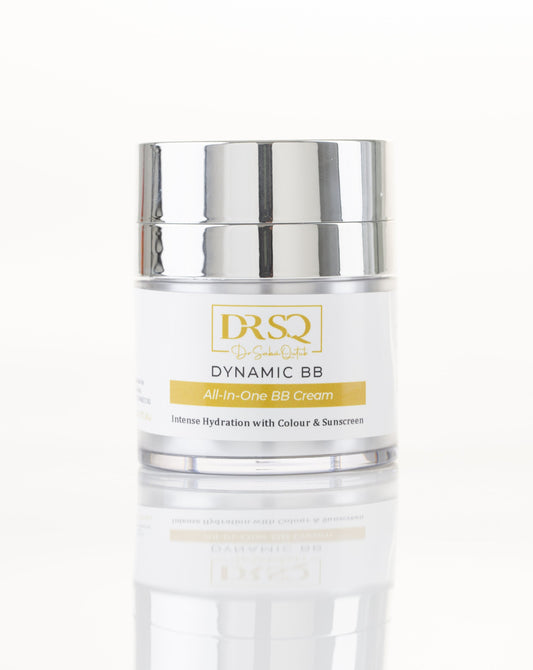Sunscreen or Moisturiser: What Should You Apply First?

Moisturiser completes the skincare routine, and so does a broad-spectrum sunscreen. However, the real benefit lies in how you apply them. The right technique can help you maximise benefits and save on extra effort in your skincare regimen.
This blog will help to understand the correct order of application when you have both sunscreen and moisturiser in your hands, so you never have to second-guess your skincare order again.
How Sunscreen Benefits the Skin
The sun can damage your skin more than you can ever imagine. The ultraviolet radiation can accelerate premature ageing and induce pigmentation in your skin. Moreover, UVB rays can damage DNA by creating pyrimidine dimers—mutations that can lead to certain skin cancers.
UVA rays can go deeper into the skin layers to break down the elastin and collagen. This can make you look older with visible ageing signs.
Sunscreens work by absorbing or scattering UV radiation. It is a never-to-skip product in your morning skincare routine and needs to be reapplied throughout the day according to need. Research over time shows that sunscreens can help prevent pigmentation, DNA alteration, photoageing, and skin cancer caused by UV exposure (photocarcinogenesis).
How Moisturiser Benefits the Skin
Your skin barrier is crucial because it protects your skin from irritation and dryness. The stronger your barrier is, the less likely your skin is to become susceptible to infections and environmental damage.
Moisturisers protect this skin barrier by using humectants, emollients, and occlusives. Humectants retain water within the skin and keep the surface hydrated and supple. Emollients like ceramides and squalene can make the skin more resilient, and occlusives form a protective seal on the skin.
Moisturisers, regardless of the skin type, also help improve the texture and appearance of your skin by smoothing rough patches and boosting elasticity.
Also read: Moisturiser Basics: Types, Benefits, & Ingredients
Should I Apply Sunscreen Before or After Moisturiser?
Apply the sunscreen after your moisturiser. This is a general rule of thumb. Sunscreens are formulated to shield your skin against UV radiation, and applying moisturiser after it can dilute the UV filter and reduce the efficacy of the SPF.
Layering moisturiser first and sunscreen after ensures the sunscreen delivers its full SPF protection and performs reliably. But this is not a universal rule and can be changed with the set of instructions given on your products, or as directed by your doctor.
Sunscreen Before or After Makeup
The best way is to apply your makeup after moisturiser and sunscreen. When you apply makeup on top of sunscreen, it does not interfere with the performance, and you keep getting the SPF protection.
For best results, wait for about 2 minutes to let your sunscreen get absorbed into the skin before beginning with your foundation or concealer.
You can opt for a tinted sunscreen to skip foundation and concealer as well. These sunscreens give your skin a sheer glow without having to invest a lot of time into makeup.
Can I Mix My Moisturiser With Sunscreen?
No, it's not recommended to mix your sunscreen with moisturiser. You may end up with nothing, as this practice can reduce the effectiveness of both. Another thing you need to take care of is the ingredients.
The ingredients of these two products should go well with each other without reacting and giving adverse side effects to your skin if you want to mix both. Lastly, you must consult your dermatologist before mixing any products, including these two.
Can I Use an SPF Moisturiser?
Instead of trying to mix sunscreen with your moisturiser and face disappointment, you can use SPF-infused moisturisers. This saves time and hassle. These two-in-one products can hydrate your skin and shield it from harmful UV rays.
Whether engaging with outdoor activities such as swimming, playing a sport, or commuting, when you’re short on time to apply multiple steps and want to avoid inconvenience, this approach seems handy.
What Is the Best Way to Apply Your Sunscreen?
Simply use the two-finger rule to apply a strip of sunscreen along the entire length of your middle and index fingers. Spread it gently all over your face and neck. Wait at least 20 minutes after applying sunscreen before stepping out. This helps the sunscreen to create a protective film on the skin and better safeguard you. Reapply every 2 hours when outdoors.
In case you are planning to stay outdoors for a longer duration, use a body sunscreen and extend the application to the exposed body parts. Dermatologists recommend choosing a higher SPF, like SPF 50 or 60.
DRSQ SPF Moisturiser for All Skin Types
Skin Protect moisturiser is formulated with 15% titanium Dioxide, 10% Zinc Oxide, and niacinamide, infused with SPF 35+ to hydrate, calm, and protect the skin from both UVA and UVB rays. It gives a luxurious, non-greasy feel and is suitable for all skin types.

This is enriched with antioxidants and technologically advanced biomimetic peptides to act as a youth restoration complex for healthy, glowing skin.
Apply 2 pumps in the AM as the final step of your skincare routine or before makeup. Reapply as needed during prolonged UV exposure.
Key Takeaways
- Sunscreen defends against the UV radiation and helps with skin problems like premature ageing, hyperpigmentation, and dullness.
- Moisturiser hydrates the skin regardless of your skin type and retains moisture for a supple skin texture.
- Sunscreen is applied after the moisturiser in your morning skincare routine. But this practice can reverse on the basis of the product's instructions.
- Apply sunscreen before your foundation or concealer.
- It's not advisable to combine sunscreen and moisturiser. This can reduce the efficacy of both products.
- Using an SPF moisturiser saves both time and effort. SPF-infused moisturiser hydrates the skin and prevents sun damage.
- DRSQ Skin Protect is made with SPF 35+ along with titanium dioxide and niacinamide to act as both moisturiser and sunscreen.
References:
- Ronni Wolf 1, Hagit Matz, Edith Orion, Jasna Lipozencić, "Sunscreens--the ultimate cosmetic", 2003
- Guido Bens, "Sunscreens", 2014
- Linna L Guan 1, Henry W Lim 1, Tasneem F Mohammad, "Sunscreens and Photoaging: A Review of Current Literature", 2021 Nov



